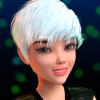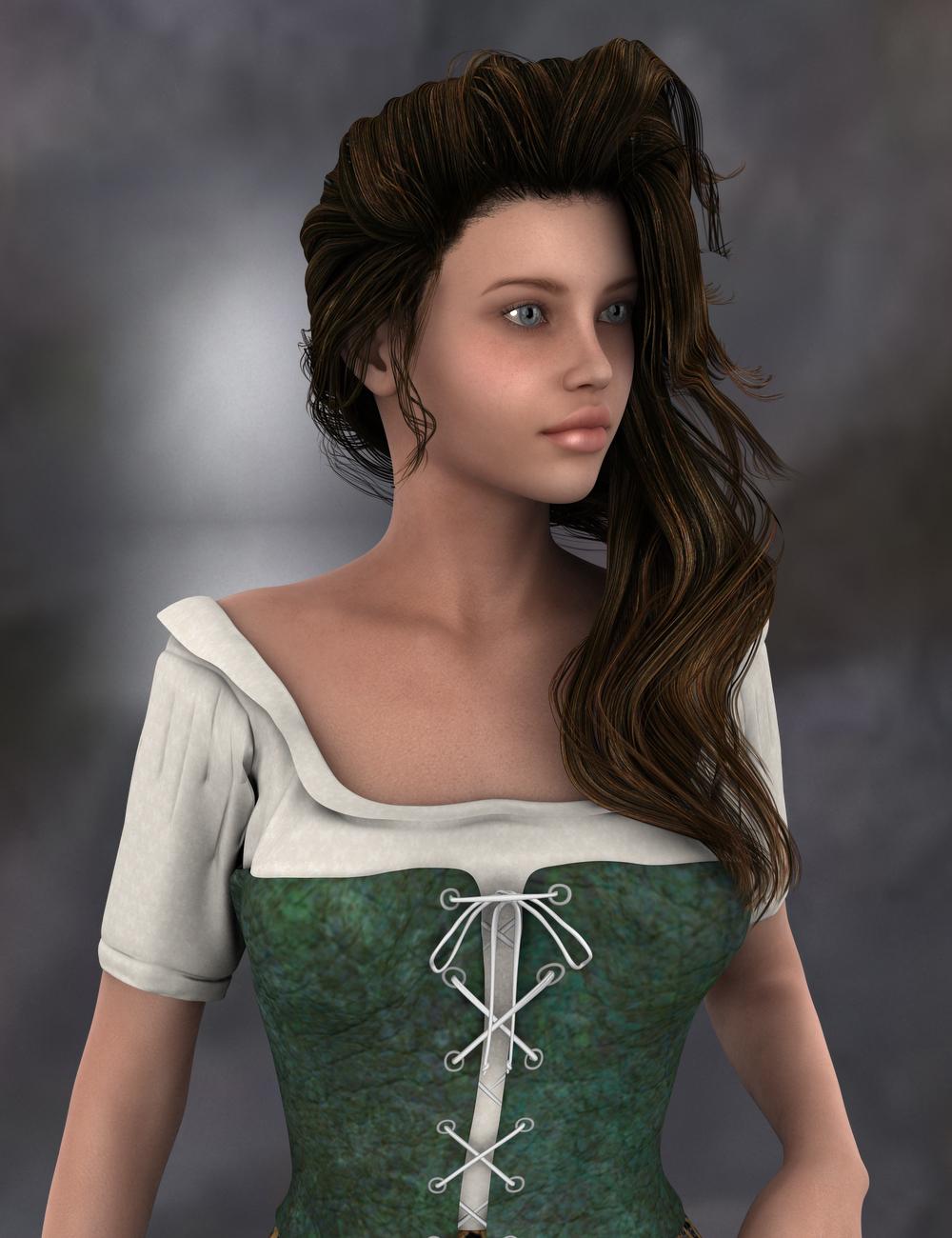Quick Question: 3Delight Rendering, Advanced Daz Studio Light Bundle and white in eyes issue
 Mollytabby
Posts: 1,163
Mollytabby
Posts: 1,163
Having used Iray since I started learning Daz Studio last October I've decided to try and render in 3Delight as well. I don't always need a realistic render because I quite often choose to digitally paint over the images. With 3Delight I'm hopefully going to cut down some rendering time  . Also I've picked up a lot of free figures and outfits for V4, Genesis and Genesis 2 over the last few months and it would be good to see how they are really meant to look.
. Also I've picked up a lot of free figures and outfits for V4, Genesis and Genesis 2 over the last few months and it would be good to see how they are really meant to look.
So I purchased Advanced DAZ Studio Light Bundle in a recent sale and I've download the rendering scripts kindly provided by @adamr001 here. My understanding of what is happening in 3Delight renders is absolutely zero I'm afraid!
This is a test render of Taylor for Stephanie 6 and no matter what I do, I'm getting a bright distinct highlight in the eyes - more of a dot than a blurred edge to the effect. I'm sure I've seen something about this when I was doing my research on Advanced Daz Stuido Light Bundle before I bought it, but would you believe it, I can't find it again. I spent hours last night going through threads. I know I could get rid of it in postwork, but I'd love to be able to render without this issue.
The lighting used on the attached image is Advanced Ambient Light. I simply set up the figure, added hair, clothes and a backdrop and did a simple set up of Advanced Ambient Light as described in the pdf and chose a high quality render setting from the script. This reached the limit of my competence  .
.
Can anyone point me to the solution?
(I'm about to cycle to the hairdressers so please don't think I'm ignoring any responses if I don't get back to you straight away  ).
).








Comments
The AoA ambient light outputs quite a bit of specular light, sometimes you might want to go to light parameters and select "diffuse only", the other options are "specular only" and "on".
But basically you need to edit the shader settings for the eye surfaces. Check the cornea (eye surface)! If it has those fake reflections (baked in highlights) lower the opacity setting or simply remove the opacity map and set opacity to 0. My settings for the cornea would be diffuse strength 0-20, specular strength 100, lightning model glossy plastic, glossiness about 89-91, ( a higher number gives you a tighter/ smaller highlight), turn off multiply spec strength through opacity, opacity strength about 15, if there is an opacity map, reflective color pure white, reflective strength 100, refractive strength 100, refraction index 1.59, refraction color pure white.
Then I would set specular/ reflective strength for the other eye surfaces to 0 and go from there. These settings will work for the Ds default shader as a starting point, depending on lightning and type of scene. With these settings you need to check the render settings pane, and make sure ray trace depth is at min 2, or you might get strange looking eyes;)
I could probably write a novel about eyes and 3DL, feel free to ask more questions if you run into trouble, and I, or someone will try to help!
@Sven Dullah, thank you so much! I'll try this advice out now. I think I need a new notebook just for 3Delight tips and tricks .
.
@SvenDullah your tips worked
I tried 'diffuse only' and it made a huge difference to the eyes but the glow on the model's skin was lost.
I then put it back to 'on' and went through and changed the settings you suggested. The result is a huge difference. The eyes look a lot more realistic and are in keeping with the shimmer on the model's skin. Thank you so much! I understand a lot more about eye surfaces than I did yesterday.
SaveSave
Glad I could help:) Looks good!
Thank you . You've given me a lot more confidence to try experimenting.
. You've given me a lot more confidence to try experimenting.
Sven, I just tried this but did not get the results of cutting the light reflection spot. Using IBLM only for light, default HDRI.
First image is before trying adjustments, second is after.
Ok I see a small difference, the highlight in the second pic is a tad smaller, but I'm not quite sure what you mean by cutting the light reflection spot. You want to eliminate the highlight? Just turn down specular strength to adjust the intensity of the highlight. Also reflection strength at 100% might be too much so try 50% and see if you like that better, or just turn off reflections completely. Or, if you enable the "multiply specular through opacity" and set opacity to 0 there will be no specular highlights.
Couple of quick examples with a sphere and a default spotlight. The sphere using the suggested settings except refraction index is 1.33 and reflection strength is 50%.
Glossiness 100 (infinitely small highlight)
Glossiness 80
Glossiness 20
Glossiness 80, specular strength 30
Specular- and reflection strength 0 (pure refraction only)
As a general rule, you don't usually want specular lighting turned on in Advanced Ambient Light because when you think about it, in the real world, environment lighting (I use the term environment lighting because technically, there is no such thing as ambient light in the real world) is very soft and very diffuse and doesn't produce much if any specular highlighting. UberEnvironment doesn't even provide specular highlighting at all.
A neat trick you can use if you want specular highlighting is to set Advanced Ambient Light to diffuse only, then add a distant light or a spotlight and set it to specular only. Turn off the Advanced Ambient Light and move the spotlight or distant light around and you will see only the specular highlights and where they will appear when you render. Then turn Advanced Ambient Light back on before you do your render. That way, Advanced Ambient Light will provide your diffuse lighting, and the spotlight or distant light will provide your specular lighting, but won't contribute any diffuse lighting to the scene. Because those are directional lights, they give you a lot of control over where the specular highlighting will appear.
Also, it's been my general experience that most characters come out of the box with the specular highlighting set way too high. You'll probably want to tighten it up a bit as well as change the color to something other than pure white (often time, some shade of gray works well.)
I kind of agree with what you say but maybe not for the same reasons. Highlighs are a way of simulating high energy reflections produced by light sources. In real life, if you go outdoor there is almost always a hotspot (the sun) that will produce these reflections on everything. The roughness of the material will determine how pronounced that reflection will be. So specular highlights are a hack if you will, nevertheless uselful for simulating that kind of reflections. The fact that the AoA ambient light does not produce a very realistic highlight is another story:)
True! It only emits diffuse light. Which is why in my opinion skin tends to look dull and lifeless with UE2 unless you add some specular light, and know how to set up proper raytraced reflections with proper roughness on the skin and eyes (and everything else).
And don't forget to turn on raytraced shadows also for the specular lights if you're going for any level of realism.
But Advanced Ambient Light doesn't provide any directional lighting, so you don't get a hotspot. That's why I almost never use it alone and almost always combine it with at least a weak direct light, even if the direct light is only providing the specular. UberEnvironment, of course, does provide directional lighting with IBL, but unfortunately, does not provide any specular to go with the directional lighting.
Ah yes. Good point.
Thank you, guys. I haven't had a chance to get back to working on this - though I will look at your suggestions. At least one of the characters I'm working with does not have this issues, and I'm also going to look at those settings. The last couple of days I've actually been doing some comparison tests with Iray, which I've been avoiding like the plague for numerous reason, particularly render time, but it's hard to deny the results of a PBR renderer (which 3delight can do with Maya now), and the PBR metallicity/roughness is pretty easy to work with. No matter what I decide about Iray, I'll surely still be using 3DL as well, so I'm not done learning about it.